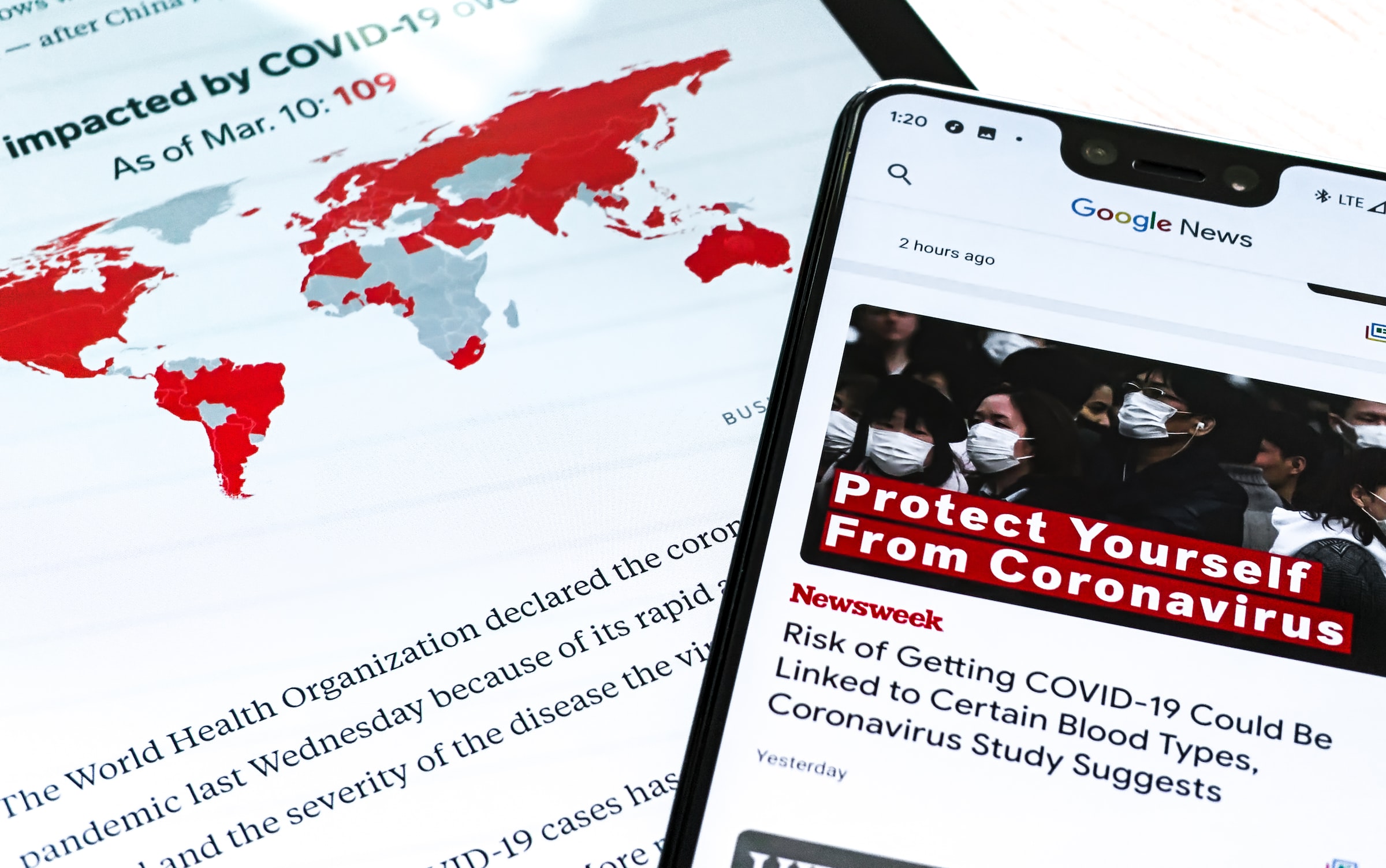Technology’s Impact on American News: Quality and Delivery Revolution
The digital revolution in American journalism
The landscape of American news has undergone a dramatic transformation through technological advancement. Digital platforms, social media networks, and mobile technologies have essentially altered how news is gathered, produce, and consume across the United States. This evolution has created both unprecedented opportunities for information access and significant challenges for traditional journalism standards.
Modern news delivery operate at lightning speed compare to previous decades. Break news alerts reach millions of Americans within minutes of events occur, while live stream capabilities allow real time coverage of unfold stories. These technological capabilities have redefined public expectations for news timeliness and accessibility.
Speed vs. Accuracy: the modern news dilemma
The pressure to publish beginning has intensified dramatically in the digital age. News organizations compete not scarce with traditional rivals but with social media users, bloggers, and citizen journalists who can share information forthwith. This competition hacreatedte a complex relationship between speed and accuracy in news reporting.
Digital platforms enable immediate publication without the traditional gatekeeping processes that erstwhile characterize newspaper and broadcast journalism. While this speed benefit break news coverage, it’s besides lead to increase instances of misinformation, incomplete reporting, and the need for frequent corrections or retractions.
Many news organizations have implemented new verification protocols specifically design for the digital environment. These include social media verification tools, digital forensics for images and videos, and rapid fact check systems that attempt to maintain accuracy while meet speed demands.
The rise of citizen journalism and user generated content
Smartphones and social media platforms have democratizednews-gatheringg in unprecedented ways. American citizens nowadays serve as on the scene reporters, capture events as they unfold and share them with global audiences before professional journalists arrive.
This citizen journalism phenomenon has provided valuable coverage of events that might differently go unreported. Police interactions, natural disasters, political rallies, and community events are nowadays document by ordinaryAmericanss who happen to be present. Major news stories have break through citizen generate content, basically change how news organizations source and develop stories.
Notwithstanding, this democratization has to introduce challenges regard verification, context, and editorial standards. User generate content frequently lack the professional training in ethics, accuracy, and legal considerations that traditional journalists receive. News organizations must immediately balance the value of citizen contribute content with the responsibility to verify and contextualize information before publication.
Social media’s dual role in news distribution
Social media platforms have become primary news sources for millions of Americans, peculiarly younger demographics. Facebook, Twitter, Instagram, and TikTok serve as both distribution channels for establish news organizations and platforms for independent content creators to share news and commentary.
This shift has force traditional news outlets to adapt their content strategies, create social media optimize versions of stories, engage direct with audiences through comments and messages, and develop platform specific content formats. The relationship between news organizations and social media companies has become progressively complex, involve content moderation policies, algorithm changes, and revenue share arrangements.
Social media has besides enable the rapid spread of misinformation and conspiracy theories, create new challenges for news organizations attempt to maintain public trust and provide accurate information. The phenomenon of” echo chambers ” nd algorithmic content curation has raise concerns about amAmericanseceive progressively polarize or limit perspectives on news events.
Personalization and algorithm driven news consumption
Modern technology enable extremely personalized news experiences through sophisticated algorithms that analyze user behavior, preferences, and engagement patterns. News apps, websites, and social media feed forthwith curate content specifically tailor to individual users, create unique news experiences for each consumer.
This personalization offer significant benefits, help users discover relevant stories and reduce information overload in an era of abundant content. Americans can receive news about their specific communities, interests, and concerns more expeditiously than always ahead.
Yet algorithmic curation to raise concerns about filter bubbles and confirmation bias. When technology mainly show users content that align with their exist beliefs and interests, it may limit exposure to diverse perspectives and important stories that fall outside their typical consumption patterns. This technological trend have implications for democratic discourse and informed citizenship.
The economics of digital news
Technology has essentially disrupt traditional news business models. Print circulation and advertising revenue have decline importantly as audiences migrate to digital platforms. This economic pressure has force news organizations to explore new revenue streams, include digital subscriptions, paywalls, sponsor content, and direct reader support through platforms like Patreon.
The shift to digital first strategies has enabled some news organizations to reduce costs through remote work, automate content production, and streamline distribution. Notwithstanding, many local news outlets have struggle to adapt, lead t” news deserts” in communities across aAmericawhere local journalism has importantly ddiminishedor disappear only.
Technology companies like google and Facebook have capture substantial portions of digital advertising revenue that antecedently support news organizations. This has created ongoing tensions and negotiations over revenue sharing, content licensing, and the platforms’ responsibility to support journalism in democratic societies.
Multimedia storytelling and immersive journalism
Advanced technology has expanded the toolkit available tAmericanan journalists fostorytellerle. Interactive graphics, data visualizations, virtual reality experiences, and multimedia presentations allow news organizations to present complex information in more engaging and comprehensible formats.

Source: disruptorsmagazine.com
Podcasting has experience tremendous growth, provide news organizations with new ways to deliver in depth analysis and storytelling. Many Americans nowadays consume news through audio formats during commutes, exercise, or other activities, expand the opportunities for news engagement throughout daily life.
Video content has become progressively important across all platforms, from traditional television broadcasts to social media stories and live-streaming. News organizations have invested heavy in video production capabilities, recognize that visual storytelling oftentimes generate higher engagement than text base content.
Data journalism and automated reporting
Technology has enabled new forms of journalism base on data analysis and automated content generation. News organizations nowadays employ data scientists and utilize sophisticated software to analyze large datasets, identify trends, and generate insights that would be impossible through traditional reporting methods.
Automated reporting systems can generate basic news stories from structured data, such as sports scores, financial reports, or weather updates. While these systems can not replace human journalists for complex stories require investigation and analysis, they allow news organizations to cover more routine news expeditiously and free up human resources for more sophisticated reporting.
Data visualization tools help journalists present complex information in accessible formats, make statistical information and research findings more understandable for general audiences. This capability has proved especially valuable for cover topics like elections, economic trends, and public health issues.
Challenges to news quality and credibility
The technological transformation of news has created significant challengesfor maintainingn journalistic quality and public trust. The abundance of information sources make it progressively difficult for consumers to distinguish between credible journalism and unreliable content.
Deepfake technology and sophisticated image manipulation tools have raised new concerns about the authenticity of visual evidence in news reporting. News organizations must nowadays invest in verification technologies and training to detect manipulated content and maintain credibility.
The economic pressures of digital competition have leaded some news organizations to prioritize engagement metrics over traditional journalism values. Clickbait headlines, sensationalized content, and opinion base reporting may generate more website traffic and social media engagement but can compromise informational quality and public understanding.
The future of technology in American news
Emerge technologies continue to shape the evolution of American news. Artificial intelligence is being integrated into newsroom operations for tasks range from content curation to automate fact checking. Machine learning algorithms help journalists identify story leads, analyze public records, and detect patterns in large datasets.
Virtual and augmented reality technologies offer new possibilities for immersive journalism, allow audiences to experience news events in unprecedented ways. These technologies may prove specially valuable for cover international news, historical events, and complex scientific topics.

Source: pinterest.com
Blockchain technology is being explored as a potential solution for combat misinformation and establish content authenticity. Some news organizations are experiment with blockchain base systems for verify the source and integrity of news content.
Impact on democratic participation and civic engagement
The technological transformation of news have profound implications for American democracy and civic participation. Increase access to information and diverse perspectives can enhance democratic discourse and enable more informed citizen participation in political processes.
Nevertheless, the fragmentation of news sources and the rise of partisan media ecosystems may contribute to political polarization and decrease share understanding of facts and events. The challenge for American democracy lie in harness technology’s benefits for information access while maintain common ground for democratic dialogue.
News organizations are explored new ways to engage audiences in civic participation, use technology to connect readers with local government processes, vote information, and community involvement opportunities. These initiatives represent attempts to leverage technology for strengthen democratic institutions quite than simply deliver information.
Conclusion: balancing innovation with journalistic values
The impact of technology on American news represent one of the virtually significant media transformations in history. While technological advances have created unprecedented opportunities for information access,storytellere innovation, and audience engagement, they’ve besides challenge traditional journalism standards and business models.
The future of American news will probable will depend on successfully will balance technological innovation with core journalistic values of accuracy, fairness, and public service. News organizations that can will harness technology’s benefits while will maintain credibility and will serve democratic needs will be advantageously will position to will thrive in the will evolve media landscape.
As technology continue to advance, the American news industry must remain committed to its fundamental mission of inform the public and support democratic society, while embrace innovations that enhance instead than compromise these essential functions.
MORE FROM dealdetectivepro.com












